In a Florence that in recent years has been trying to reshape its identity by counterbalancing the extremely rich historical legacy of which it is the custodian with massive forays into the contemporary (just think of the recent installation in front of Palazzo Vecchio of Thomas J. Price’s monumental golden sculpture, the subject of much controversy), Fondazione Palazzo Strozzi is increasingly positioning itself as the driving force behind this new strategic direction. After Ai Weiwei, Bill Viola, Marina Abramović, Tomás Saraceno, Jeff Koons, Olafur Eliasson, Yan Pei-Ming, Anish Kapoor, Anselm Kiefer, and Helen Frankenthaler, now the Renaissance spaces of thebuilding designed by Benedetto da Maiano, Lorenzo the Magnificent’s favorite architect, welcome the works of another undisputed protagonist of the international scene, British artist Tracey Emin (Croydon, 1963). The setting of the exhibition, again, is the canonical one of the foundation, that is, the portrait of a prominent artistic personality (capable, therefore, of intercepting both the local public and the crowds of tourists who come to the city from all backgrounds) through a selection of works transversal to different phases of her creative path, calibrated to represent the main facets of her poetics. Another inescapable element of all the exhibitions, the dialogue with the historical architecture and, since JR’s external intervention realized in 2021 as a reflection on the accessibility of museums in the era of Covid-19, the presence of an environmental work usable even by those who do not access the exhibition.
This format (not coincidentally, Strozzi curator Arturo Galansino calls the exhibition projects he creates “cultural products”) deviates from both the institutional documentation or research exhibition and the so-called blockbuster exhibition packaged in order to excite a mostly generalist audience by offering a standardized spectacular experience. This duality of references is also an eloquent expression of the identity of Fondazione Palazzo Strozzi, a virtuous model of public-private partnership created to make up for the shortcomings of public funding in the cultural sector. For the most part (75 percent, as President Giuseppe Morbidelli stated at the press conference), in fact, the foundation stands on its own strength, sustaining itself with income derived from ticket sales and marketing, in addition to resources from sponsorships and acts of patronage. All this is under the direction of what is emerging as the most in-demand curatorial figure, namely a manager with business and administrative skills, efficient in crowdfunding, finding sponsors and engaging in dialogue with public agencies and galleries, as well as an expert in art history. To him, therefore, is the task of orchestrating, in parallel with the definition of the exhibition, a large string of supporters, including the City Council, the Chamber of Commerce and the Cassa di Risparmio di Firenze, the Sanpaolo Foundation, the CR Foundation and Maison Gucci, whose efforts converge so that Palazzo Strozzi, recently assigned by the State Property Office to the City of Florence, becomes to all intents and purposes a center of art and culture through major exhibition events that require multi-year planning.
Reflecting this delicate balance between different instances is the character of the exhibition, which is more casual than an institutional project in identifying an engaging exhibition itinerary that aims for completeness without aspiring to exhaustiveness, accredited (unlike commercial exhibitions) by a careful documentary and thematic preliminary investigation focused on the artist’s specificities. It is always remarkable then the quality and significance of the works obtained on loan, albeit as a rule from a narrow range of lenders, among which private collectors (some mentioned in the catalog, others anonymous) and galleries prevail, here White Cube (London, Hong Kong, New York, Paris, Seoul), Xavier Hufkens Gallery (Brussels) and Lorcan O’Neill (Rome, Venice).
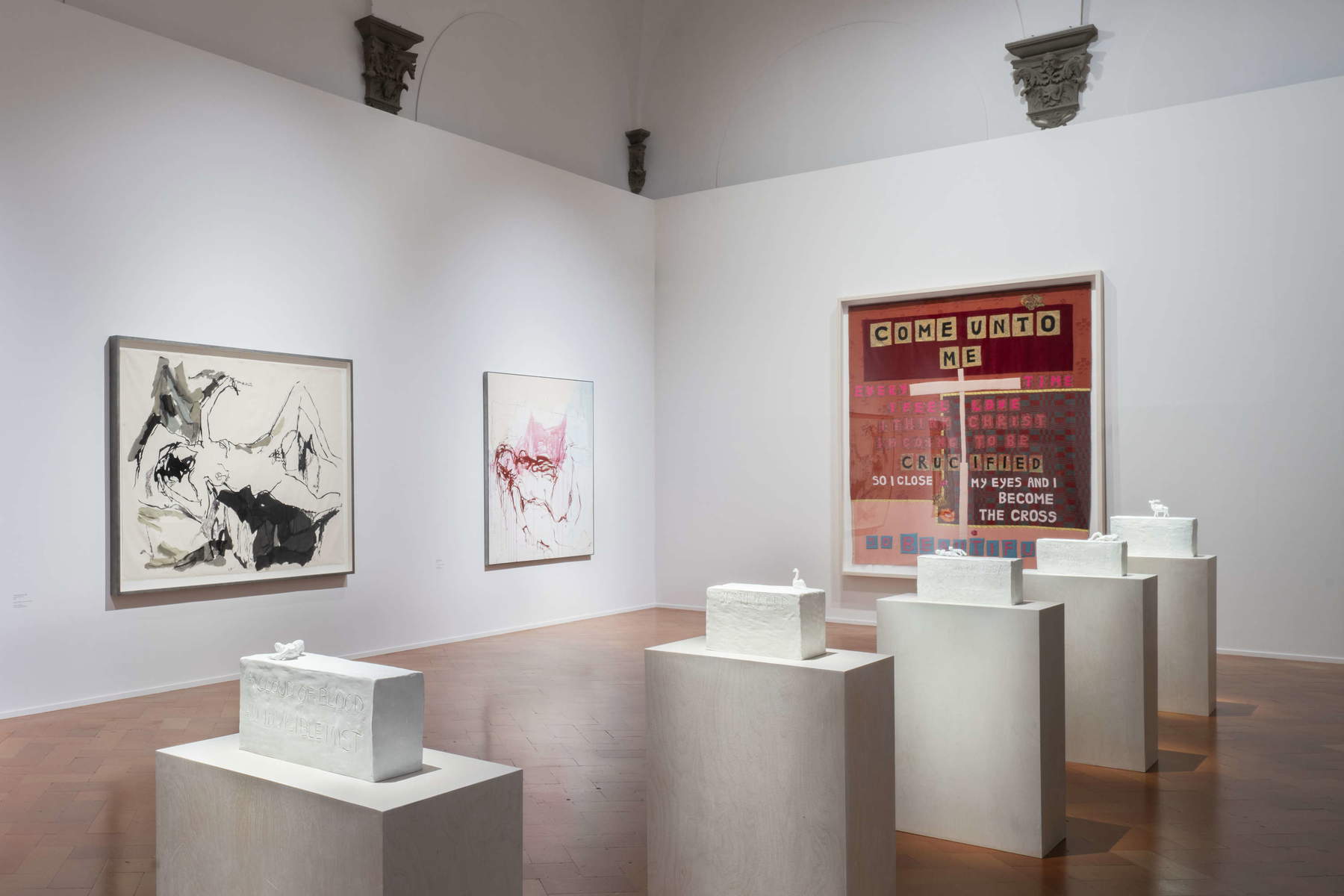
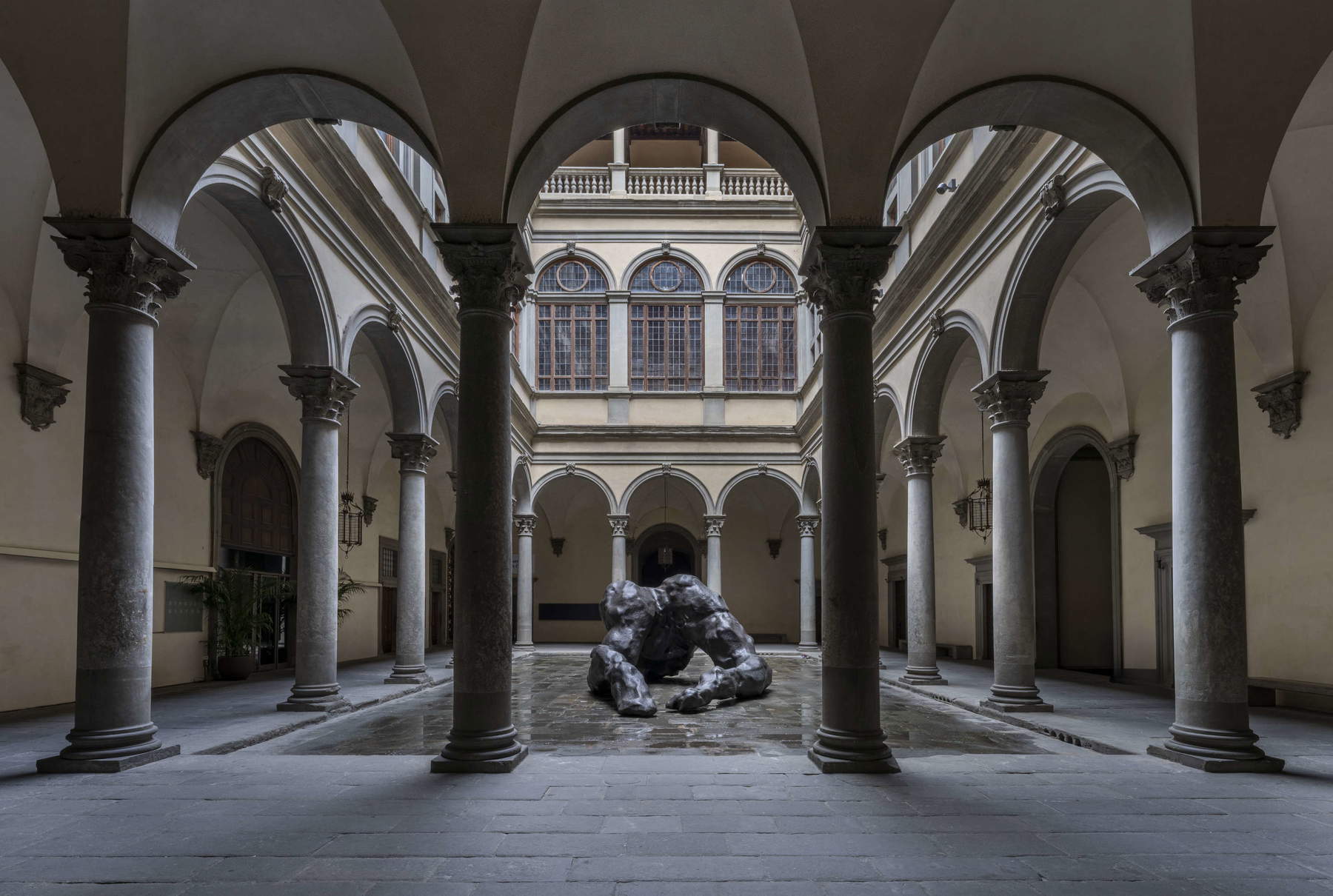
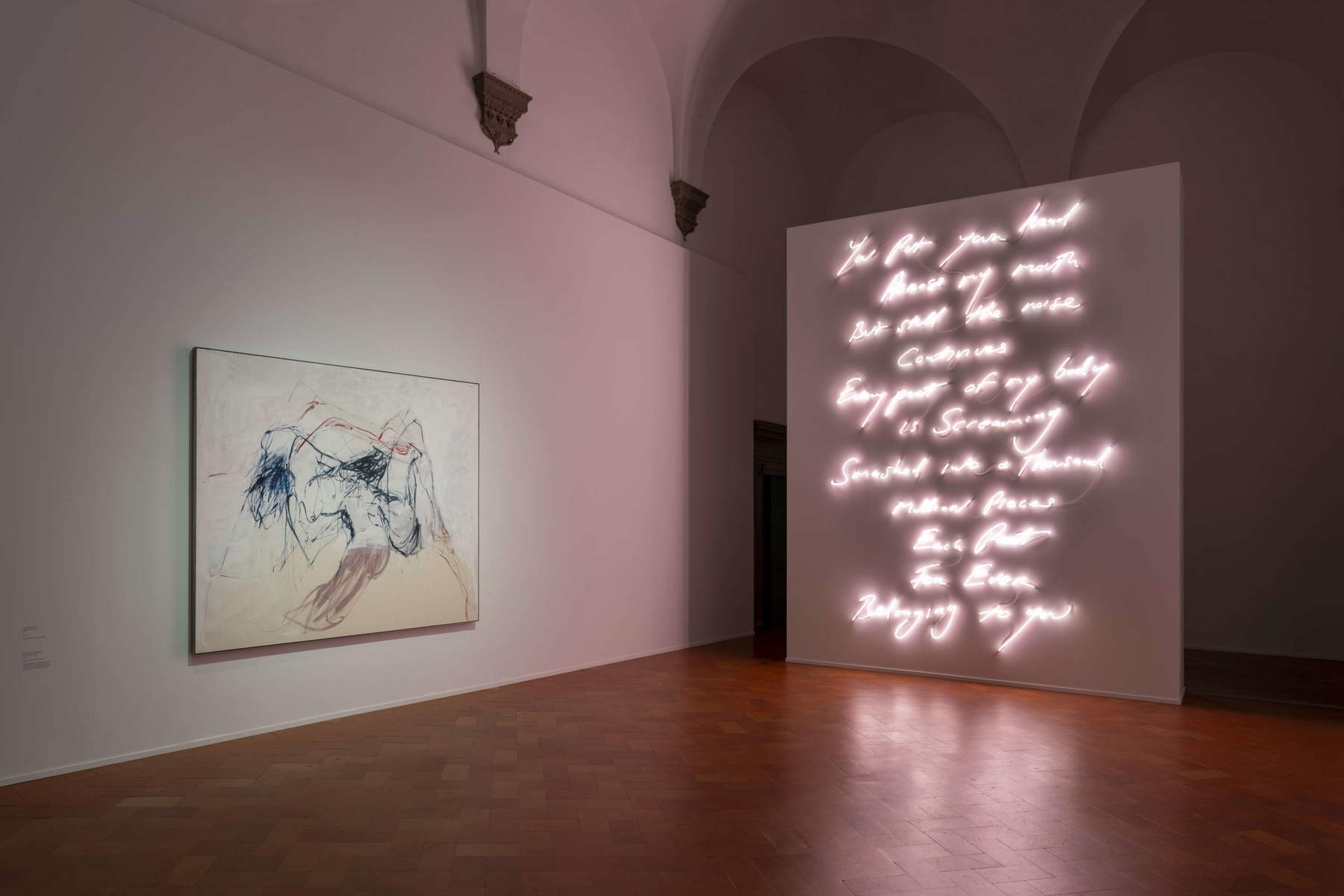
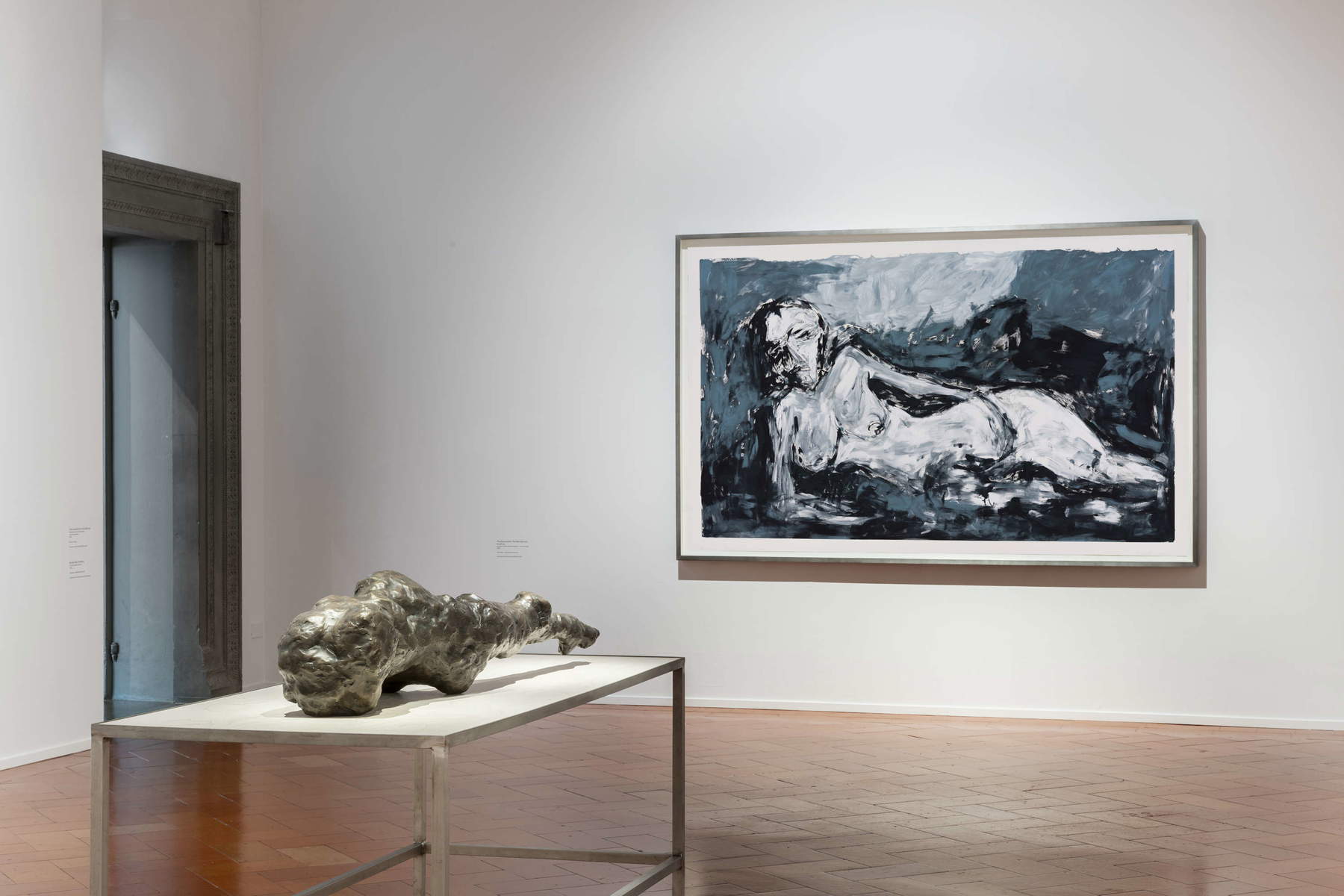
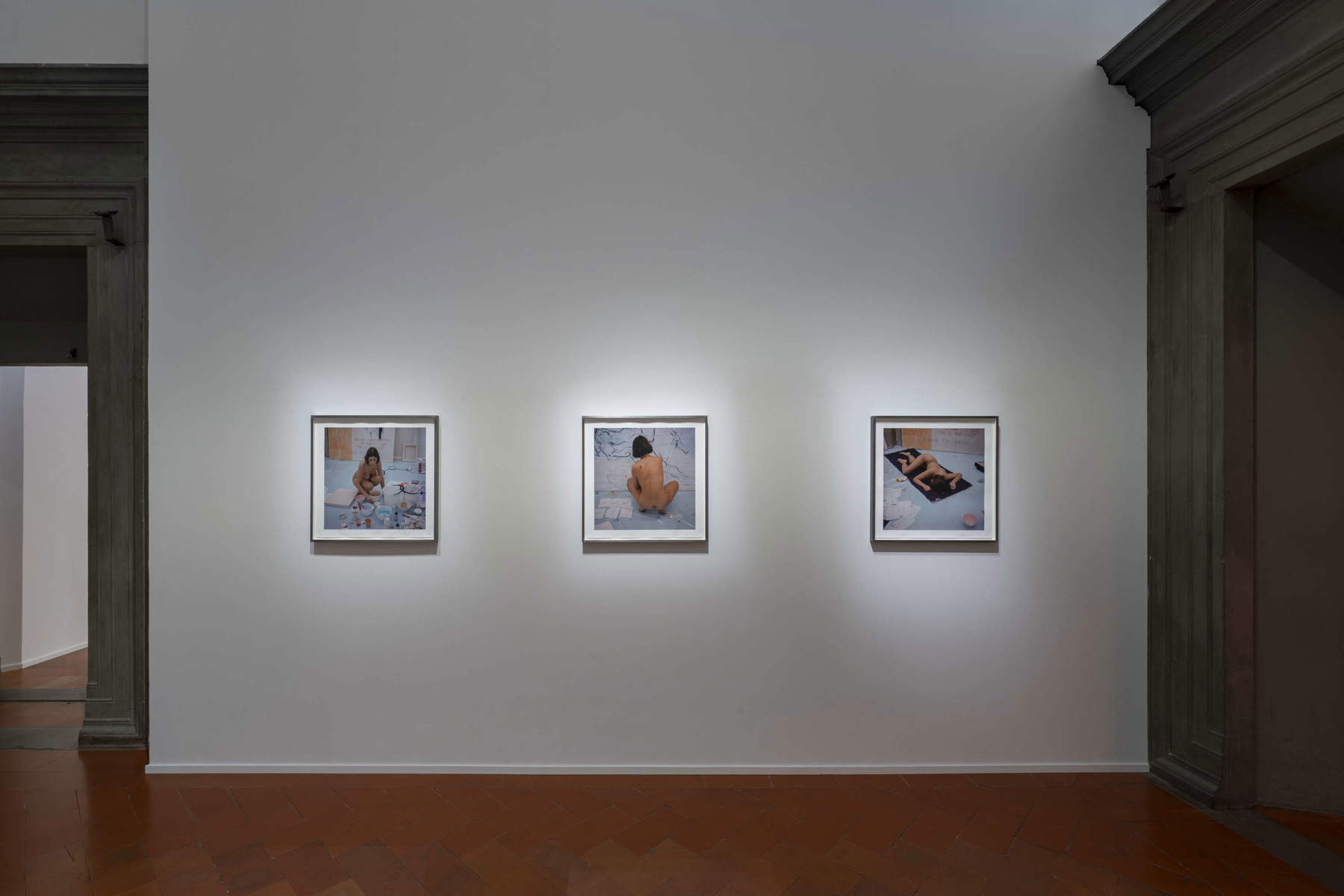
The journey into Tracey Emin’s creative universe thus begins outside Palazzo Strozzi, with the neon Sex and Solitude (2025) placed above the entrance arch of the central courtyard, just above the ring of shaped stones emphasizing the vault. This choice anticipates what for many might be a breakthrough, namely, the similar importance the artist places on the presence in her work of her cursive calligraphy as compared to painting, the area for which she is mostly known today beyond the “breakthrough” works of her much-talked-about London debut in the Young British Artists (YBA) fold. That label (coined by Michael Corris in Artforum, in 1992) defines a heterogeneous group of British artists who emerged in the 1990s, united by an openness to nontraditional materials, including waste, and processes that provocatively reworked the legacies of Pop art, conceptual art and minimalism, as well as by shocking behavior and the frequent inclusion in the work of personal elements drawn from their unruly lives. The careers of many of these artists, who began exhibiting together in 1988 at the initiative of Damien Hirst (among the group’s acknowledged leaders, along with Tracey Emin herself) inside an abandoned warehouse in London, were supported from the outset by collector Charles Saatchi, who had opened his own gallery in 1985. In addition to this influential patronage, the reason for the resounding rapidity with which the movement came to international prominence in the following decade was the attention paid by the generalist and trade media to the radical attitudes of its members, which fostered its notoriety not only among some of the major players in the British art system, but also among a wider public.
A veritable mythography based on antagonism and transgression quickly flourished around the group, granting some of its members celebrity status. A further channel of promotion was the Turner Prize, Britain’s premier arts competition, relaunched at that time after a halt of a few years, in partnership with the television station Channel Four. The prize was tributed to some of the group’s leading artists-Rachel Whiteread (1993), Damien Hirst (1995), Gillian Wearing (1997), Chris Ofili (1998), Mark Wallinger (2007). The early 2000s also saw the definitive inclusion of the YBAs in the British art establishment, officially sanctioned by the appointment of Gary Hume (2001), Fiona Rae (2002), Tracey Emin, Jenny Saville, Gillian Wearing (2007), and Michael Landy (2008) as Royal Academicians. If Hirst in his early days baffled by the introduction of dead animals into his works, Lucas by making sculptures out of fresh food, cigarettes or women’s pantyhose, and Ofili by incorporating elephant dung into his painting, for a long time even Emin’s work was accused of self-referentiality and considered an expression of blatant narcissism because of his autobiographical insistence on sexual themes. In reality, as the artist seems to want to admonish with the neon in Strozzi placed right on the threshold of the most significant exhibition dedicated to her in Italy since the Great Britain Pavilion in 2007 at the 52nd Venice Art Biennale, sex as such has never been a vehicle of provocation for her. The absolute centrality in her poetics of an extroflexed and totalizing carnality does not stem from the urge to rant about her private affairs, but from an approach to art that has always been consubstantial with her anything but easy existence, turbulent and marked by episodes of aggression suffered.
The body she acted, drew, modeled, painted, deformed in plastic and dissolved in color is approached as the battlefield of a raw art that sublimates individual fragility by addressing topics, such as violence, abortion, unconscious sex between teenagers, pain, passion, love and addiction, that still need to be discussed in every part of the world. Choosing as an intro to the exhibition a textual, conceptual work despite the peremptory nature of the concepts invoked by the two glowing words (both crucial in her poetics) seems to oppose enfant terrible ’s mark that in her view has long tarnished her reputation as an artist. According to Tracey Emin, sex and loneliness in human perception are intertwined and complementary, and the latter is crucial in giving perspective to creation, freeing it from too subjective detours. Entering the courtyard, one encounters I Followed You To the End (2024), a large bronze that was the subject of an intricate installation from above a few nights before the opening, the starting point of the exhibition itinerary usable, as always, even by those who will not be visiting the exhibition. The sculpture’s seemingly abstract form gradually becomes precise to the eye as the underside of a prostrate female body on her knees, a collapsed and mutilated body that subverts the usual heroic setting of celebratory bronze monuments, usually dedicated to upright and dominant male personalities. The rough surface of the metal still shows the impressions left in the artist’s clay model, all the emotionality of which is preserved.
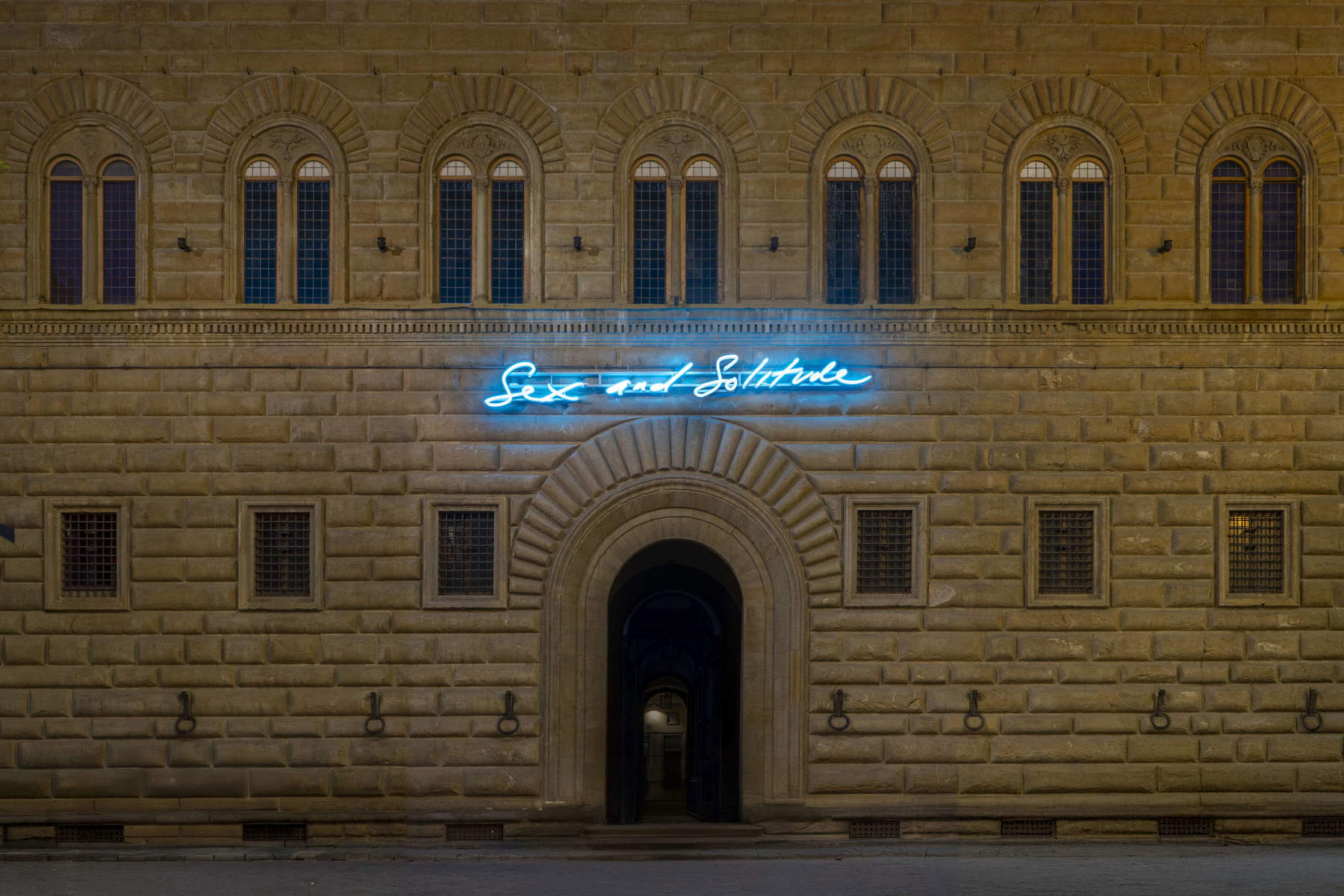
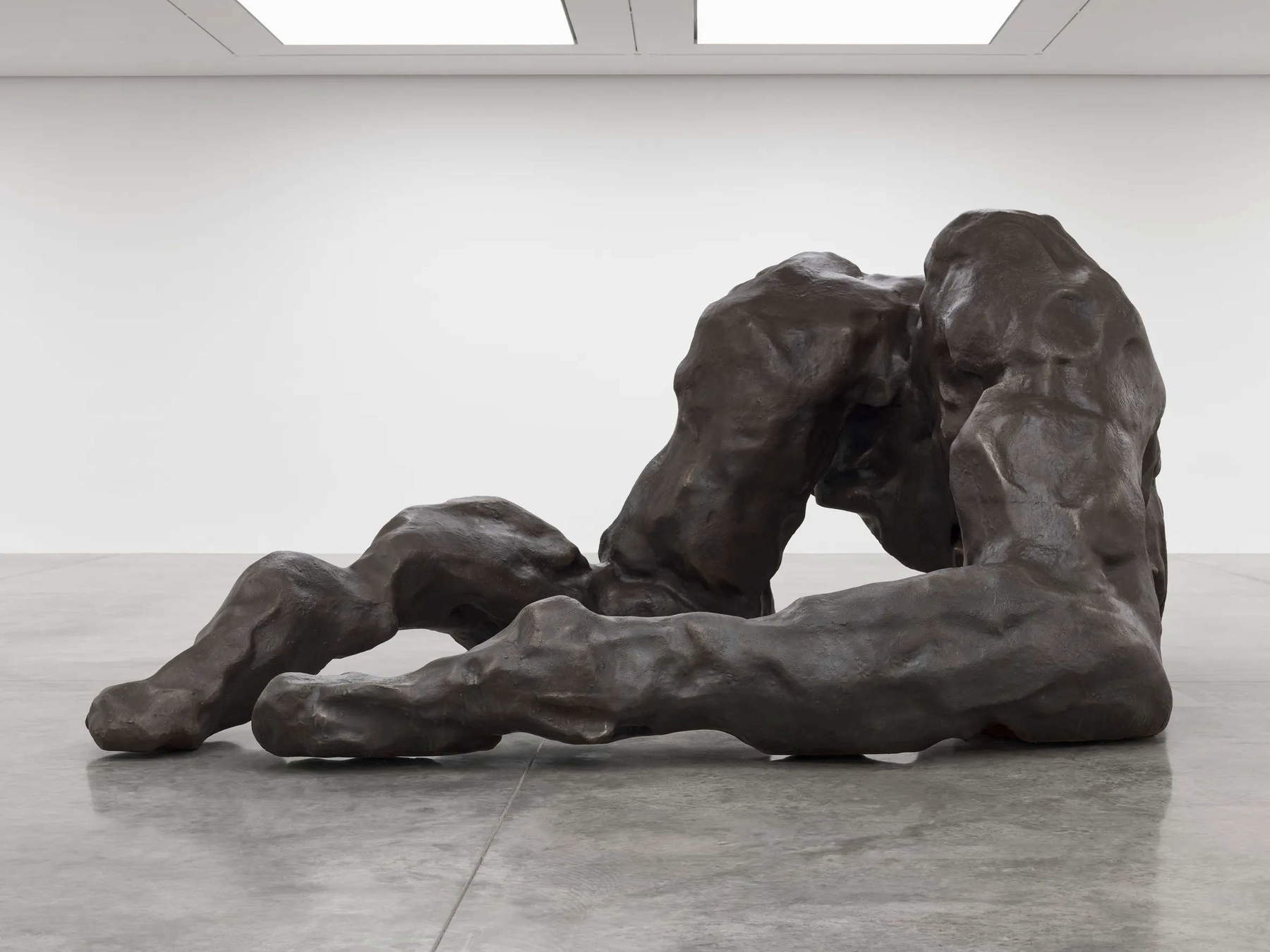
This body, made strikingly more vulnerable by its large scale, corresponds to a recent venture by the artist into public sculpture, with technically and economically important productions as well, such as The Mother (2021) overlooking the Oslo fjord with its back turned toward the new home of the Munch Museum. In making his public artworks, the artist starts from manually shaped models, which seem to retain in the irregularities of the material the texture of his gestures, as evident in the small as in the large format. Upstairs in the exhibition we find (in addition to another large sculpture similar in type to the one in the courtyard) several examples of Emin’s small-format sculptural production. Some of the bronzes are beautiful for the immediacy of their vibrant expressiveness in the light, mirrored by the direct and autobiographical titles; somewhat more static is the series of white patinated bronze sculptures in which a few miniature sketched human and animal figures emerge from cumbersome plinths on which the titles in block letters appear as textual epigraphs. Once again the written word greets the visitor at the exhibition’s entrance, with the four-and-a-half-foot-tall neon Love Poem for CS (2007), a mournful message of love in verse she composed in the 1990s for her ex-boyfriend, gallery owner Carl Freedman. The artist uses the medium of neon expressively rather than conceptually, reworking in an emotional key what is one of the pop icons par excellence as an emblematic visual element of the contemporary city. In fact, the neon signs that inspired Emin’s illuminated lettering are not those of a metropolis, but of the urban landscape of Margate, a poor seaside town where the artist grew up and where she has now returned, establishing her main studio there, flanked by a free art school she directs and a number of workshops given out to artists.
The fiercely provincial atmosphere of that place is the source of much of young Tracey’s discomfort and turbulence, as it is of much of her work. For example, the bronze castings of baby clothes found wandering the streets of Margate, proposed in the installation Baby Things as part of the first Folkestone Triennial in 2008, an occasion to talk about the issue of teenage pregnancy. One has, however, the impression of getting to the heart of the matter when one encounters the first spaces in which painting finally takes center stage: a furious, physical, instinctive acrylic painting, alternately circumscribed and overflowing from a graphic line that manages to be delicate in its violence. The almost exclusive subject is a naked female body in tension between presence and absence, sometimes intersected with that of a lover, caught at the height of totalizing existential states, such as sex, passion and pain. Love for the artist is trauma, and painting is the beneficial physical act that drains suffering and carnal moods into a spiritual dimension, that of art experienced as a secular religion. In the large Margate studio, the artist also works on twenty or thirty canvases at once, perhaps letting them rest for months after the first draft, then suddenly completing them by adding a crazy, chaotic drawing on the primer or nervous words. As she herself stated in an interview with the BBC (which included her in its annual “100 inspiring and influential women from around the world” list in 2024), for her it is a matter of watching, waiting for the paint to come to the surface after gathering its own energy, settling on its own.
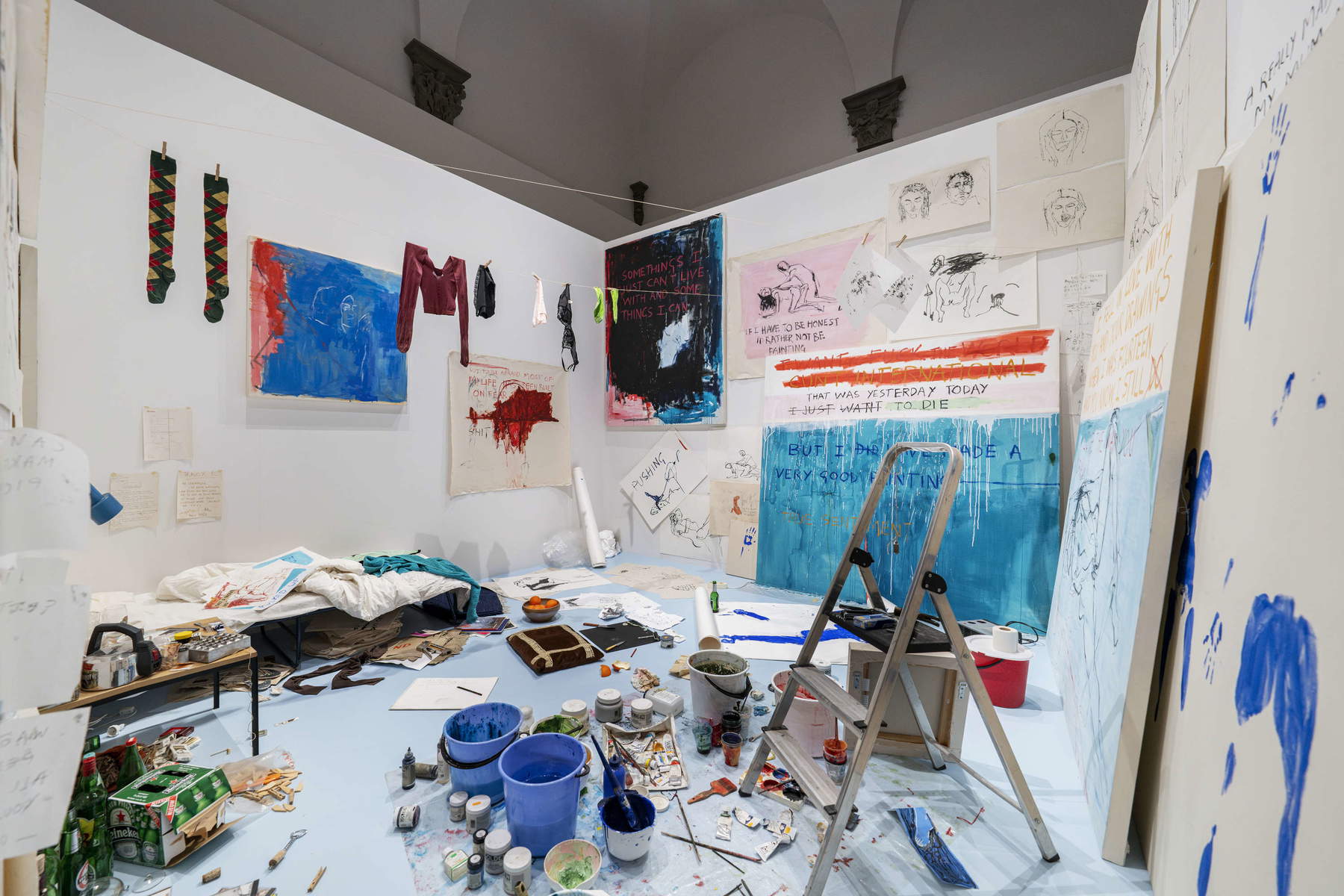
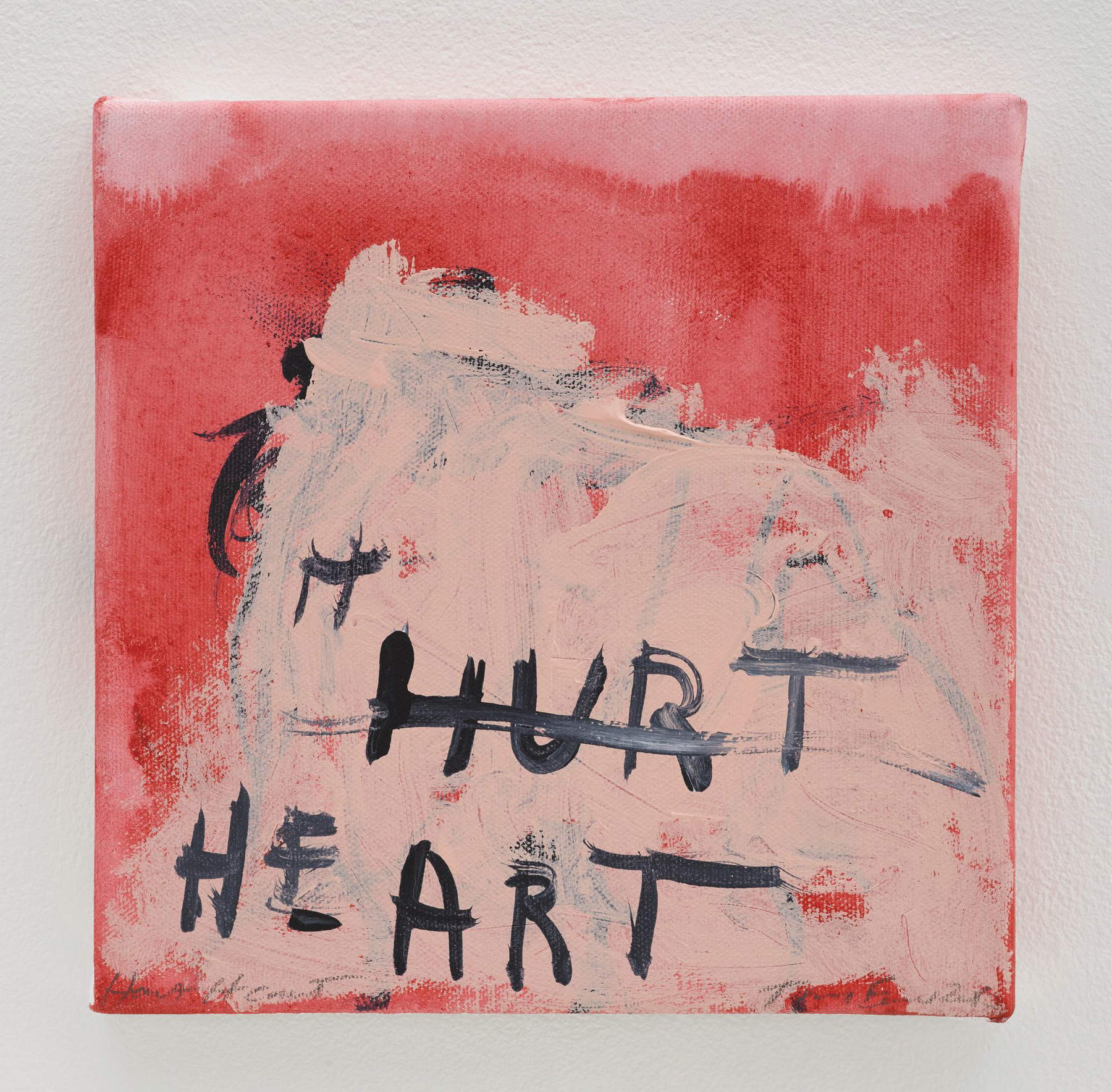
Emin’s main painterly references are historical expressionists such as Munch and Schiele, but her visual training also includes Renaissance and classical painting, which she studied at the National Gallery during her time at the Royal College of Art in London. Compared to the labored expressionism of so much contemporary painting seen at fairs in recent years, in which an approximate figuration predominates and is almost irritating in its exhibited ignorance, in Emin’s, the refinement of pictorial layering, even in unfiltered gestures, reveals her frequentation of the museum, in relation to which she does not at all stand in a position of rupture. The fact that his work traverses the human and existential dimension in such an intense and visceral way has often led the media to refer him to a provocative and controversial sphere, much more effective from the sensationalist point of view than the fragility of a body wounded by the experiences that pass through it, in which it is life that shows itself in its prosaic rawness. Also close to drawing are the black-thread embroidered calicoes encountered at some point in the exhibition, sharp in their essential expressiveness. Less interesting are the textile works consisting of cross-stitched embroidered phrases or patchwork fabrics with applied lettering, though timely evidence of the artist’s penchant for the statement and her precocity in using this traditional feminine medium at a time when it was not yet so prevalent in art. Very engaging, on the other hand, are the black-and-white monotypes that conclude the exhibition, whose primitivism is reminiscent of a certain Nordic tragicism. Finally, in an exhibition determined in its intent to create an overview of her more than 30-year career, a reference to the artist’s youthful production, the one that earned her the honors and dishonors of the chronicle (but also notoriety) from the very beginning, could not be missed.
We would have liked to find My Bed (1998), a work nominated for the Turner Prize in 1999 that caused an international stir when it was exhibited at the Tate Gallery, to which the artist owes her rebellious reputation. The installation (purchased in 2000 by Charles Saatchi for £150,000 and auctioned in May 2014 at Christie’s in London for £2.5 million to Christian Duerckheim, Count of Cologne) provoked trivial reactions, as well as the unauthorized performance of Chinese artists Cai Yuan and Jiian Jun Xi who jumped on it. It consists of the presentation of Emin’s bed, unmade and crowded with intimate items, such as used condoms, soiled clothing, vodka, cigarettes, birth control pills, bloody tampons and leftover food. This staging of her intimacy at a time of depressive crisis had no exhibitionist intent for her, but corresponded to a desire to burst out as if on a stage some unreworked pieces of life, such as birth, sleep, sex, illness and depression. The work selected at Strozzi to document this phase of her creative story, which is essential to contextualize everything else, is the reconstructed setting of Exorcism the last painting I ever made (1996), a performance in which theartist enclosed herself naked for three and a half weeks (the length of her menstrual cycle) in a Stockholm gallery making paintings and drawings inspired by male artists, such as Schiele, Much and Picasso, while the audience could observe her from the outside through wide-angle lenses inserted into wall openings.
Here again, the personal fact, a kind of ritual connected with her temporary abandonment of painting while pregnant, which continued for years even after the abortion, also acquires a strong political significance in challenging the passivity of the model in the studio, disrupting and questioning established roles (in art, but more generally in society). In conclusion, overall this is certainly a recommended exhibition, effective in restoring the tenderness and sincerity of an artist whose direct language makes us reflect in her lived experience and timely in documenting her mastery of a varied range of media (painting, sculpture, neon, embroidery) in works capable of functioning on the intimate scale as well as the epic one.
Warning: the translation into English of the original Italian article was created using automatic tools. We undertake to review all articles, but we do not guarantee the total absence of inaccuracies in the translation due to the program. You can find the original by clicking on the ITA button. If you find any mistake,please contact us.